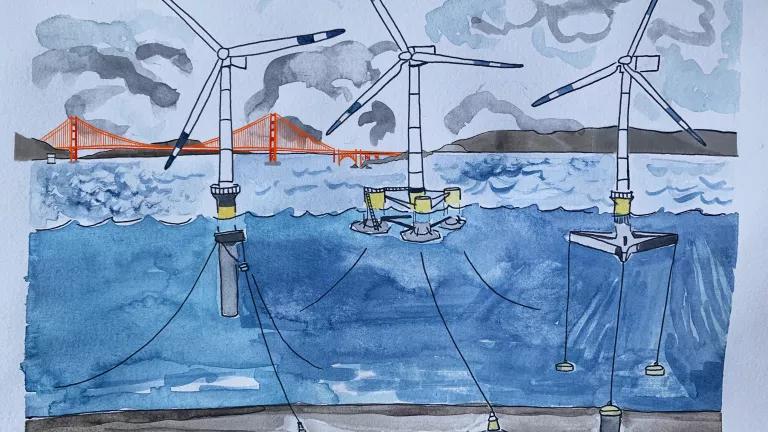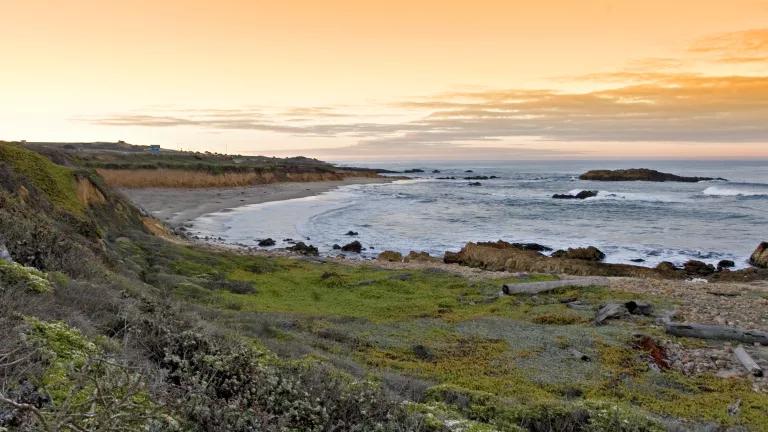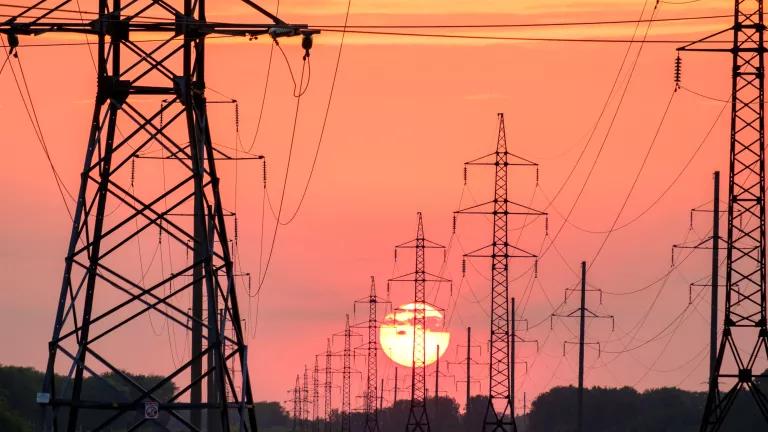Offshore Wind: The Missing Link in California’s Energy Mix?
As a renewable source, offshore wind can help California to solve its carbon reduction puzzle. However, its development has a unique set of challenges—environmental, regulatory and economic.

If you’ve ever driven a car, you’ve certainly read the phrase “objects in the mirror are closer than they appear.” California law requires the state’s electricity to be zero carbon by 2045 and the economy to be carbon neutral by then as well. The goal is appropriate, ambitious, and the challenges are novel. Because of the scale of change required, just like that object in the mirror, 2045 is closer than it appears.
As a renewable source, offshore wind can help California to solve its carbon reduction puzzle. However, its development has a unique set of challenges—environmental, regulatory and economic.
The Bureau of Ocean Energy Management (BOEM) has kicked off the federal Outer Continental Shelf leasing Process by identifying three Call Areas where offshore wind could be built: Humboldt on the North Coast, and Morro Bay and Diablo Canyon on the Central Coast. If developed fully, the Call Areas have a potential of around 8 GW. Yet, there is more work needed to identify the best locations within those Call Areas to balance technical and economic feasibility and minimize environmental and stakeholder conflicts.
Through this two-part blog, we explain why California needs to seriously consider offshore wind as an option to meet its zero-carbon goals and why it needs to commit to building the first 100 MW within the next year - Part 2. Lessons learnt from this first commitment will help the industry scale up smoothly.
California (Offshore Wind) Dreaming
While trying to meet its zero carbon goals by 2045, California is also increasing its electric demand. With a wave of cities passing building electrification legislation, electric vehicles’ growing popularity and the recently adopted Advanced Clean Trucks rule, the trend is clear.
To address the question of how to supply this increasing demand with clean and affordable electricity, the California Legislature passed the Clean Energy and Pollution Reduction Act (Senate Bill 350). A key part of this bill is for the California Public Utilities Commission (CPUC), California Energy Commission, and the state’s electricity providers to figure out how to cut these emissions in a least-cost manner.
California gets almost 35 percent (100 GWh) of its electricity from gas fired power plants. To move away from these fossil plants and to meet the state’s climate action goals of carbon neutrality by 2045, new sources of clean electricity need to come online. And while the current go-to renewable resources—solar, onshore wind and battery storage—are technically capable of helping us get to zero-carbon electricity, it would be cheaper and easier to reach that goal with a broader range of technologies. So, California’s electricity providers should invest in renewable sources of electricity that are a good complement to solar, onshore wind, and batteries.
Offshore wind can be an important complement because it can meet California’s renewable energy needs during rainy and cloudy winter months when less solar is energy available. Even more appealing from an energy planner’s perspective is that offshore winds ramp up in the afternoon and evening when the sun goes down. This means that offshore wind could reduce the need to build expensive storage, and the need to retain gas power plants.
Offshore and Onshore Wind, Same Genus but Different Species
While offshore wind operates under the same premise as onshore—capturing energy from the wind to generate electricity –turbines on the ocean present a unique set of challenges. Depending on the ocean’s depth, turbines could be fixed at the bottom of a shallow seabed or float on deeper oceans. The vast majority of offshore wind exists in shallow waters where the bottom of the turbines can easily reach the seabed.
Many states off the East Coast have taken advantage of shallower waters and kickstarted offshore wind development through public policy. For instance, in 2016, Massachusetts signed the Act to Promote Energy Diversity to spur the building of 1.6 GW of offshore wind energy by 2027—the target was later doubled in 2018. New York and New Jersey both committed in 2019 to a goal of 9 and 7.5 GW by 2035. With five giants standing on the horizon, the Block Island wind farm in Rhode Island can produce more than 125,000-MWh of electricity annually, enough energy to power 17,000 homes.
Compared to the East Coast’s Atlantic seashore states, California’s continental shelf drops off steeply meaning that relatively novel floating turbines are the only option. However, the novelty of floating offshore wind technology shouldn’t be prohibitive. Hywind Scotland, the first floating offshore wind development globally, was brought online in 2017.
Unleashing California’s Offshore Wind Potential
California has the wind energy resource technical potential to power at least 110 GW of offshore wind. However, environmental, stakeholder, regulatory and economic considerations mean that only a portion of that total can be feasibly built.
Before the state commits to power the first few houses from these floating turbines, it needs to make sure that offshore wind development can be conducted in an environmentally responsible and cost-effective manner. Specifically, the state’s regulators and legislators need to figure out the following concerns:
- Environmental: how will these floating structures interact with and impact California’s unique marine ecosystem? How can they be sited and maintained with minimal ecological disruption?
- Regulatory Processes and Stakeholder Concerns: different state agencies and the federal government regulate different aspects of California’s federal and state waters. Moreover, the Department of Defense and California’s fishing industry are wary of how these wind-farms may affect their activities. Developing offshore wind responsibly will require unprecedented cross agency coordination. How is this best done so that siting offshore wind doesn’t turn into a procedural quagmire?
- Economic: building offshore wind is still expensive. If deployed at a commercial scale, it could bring cost down and make it a competitive alternative compared with some other zero-carbon options. So, what scale of deployment and pace are the most cost-effective for the state’s electricity sector and captures more benefits for California’s economy at large?
Our next blog in this series will propose a solution to help California’s policymakers answer these questions and chart a path forward to a clean electricity future powered (in part) by offshore wind.



